Richard III: 20,000 visit coffin in Leicester Cathedral
- Published
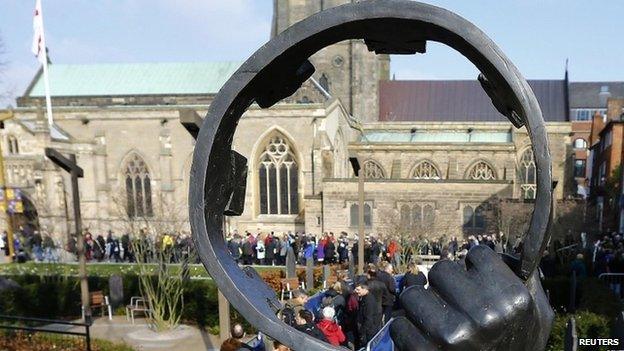
Thousands of people queued for hours to catch a glimpse of Richard III's coffin in Leicester Cathedral
More than 20,000 people have visited Leicester Cathedral to view Richard III's coffin over the three days it was on display.
The cathedral has now closed in preparation for Thursday's reburial and the unveiling of his tomb on Sunday.
Richard III's skeleton was found under a car park in Leicester in 2012.
More than 35,000 people turned out to see his cortege parade through parts of Leicestershire on Sunday before his casket went on display on Monday.
The reburial ceremony on Thursday will be led by the Archbishop of Canterbury Justin Welby and witnessed by the Countess of Wessex.
The Bishop of Leicester, The Right Reverend Tim Stevens, said the service will be "solemn, but hopeful".

Thousands of white roses, the symbol of Richard III's House of York, have been placed at his statue in Leicester
"It is a major national and international occasion with a lot of ceremony," he said.
"The peers from Bosworth families, descendants of those who fought on both sides of the battle, will be here.
"The coffin will be borne into the sanctuary of the cathedral where it will be committed to the ground, into the vault which has been prepared."
Oscar nominated actor Benedict Cumberbatch will read a poem by Poet Laureate Carol Ann Duffy, commissioned for the occasion.
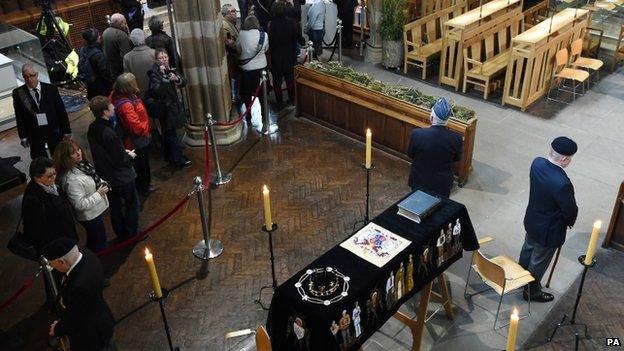
Inside Leicester Cathedral, viewers filed past Richard III's coffin which was provided with a guard of honour
Research by the University of Leicester proved Cumberbatch is a second cousin, 16 times removed, of Richard III.
But experts were quick to point out that between one and 17 million people are related to the last Plantagenet.
Richard, the last English king to die in battle, was killed at Bosworth Field in 1485, at the end of the Wars of the Roses.
After his death his body was taken to the Greyfriars Church in Leicester and buried in a hastily dug grave.
His grave's location became a mystery until it was found under a municipal car park in a discovery that stunned archaeologists and drew worldwide attention.

Richard III - Controversy King
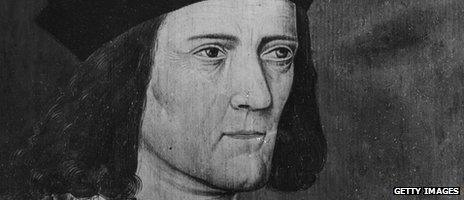
Throughout Richard's turbulent upbringing - two periods of exile and the death in battle of his father - he proved himself a capable and loyal follower of his eldest brother, who became Edward IV.
However on Edward's death, Richard seized and imprisoned his young sons. They were then disinherited on the grounds Edward had a previously unheard-of marriage contract with another woman.
Richard passed a number of laws, including an early version of legal aid and making courts use English, which benefited the common man.
Despite this, his taking of the crown, the disappearance of Edward's sons and the execution of several leading nobles, lead to discontent and rebellions.
At Bosworth, Richard's larger army failed to crack Henry Tudor's troops while the king's reserves did not move to his aid.
The blackening of his reputation by Tudor historians started debate about his personality and legacy which is ongoing to this day.

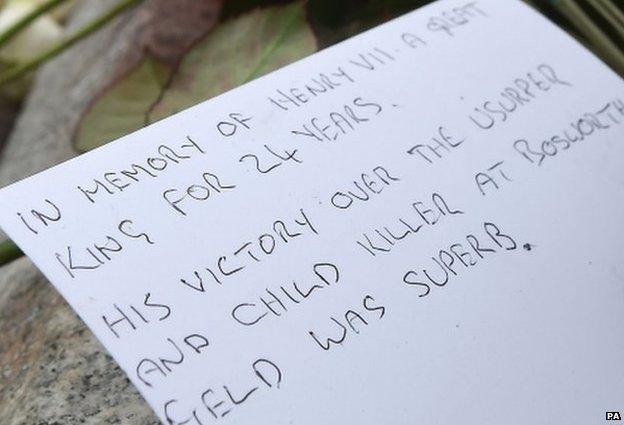
Not everybody was respectful of the former king with this note left alongside a bunch of Lancastrian red roses
- Published22 March 2015
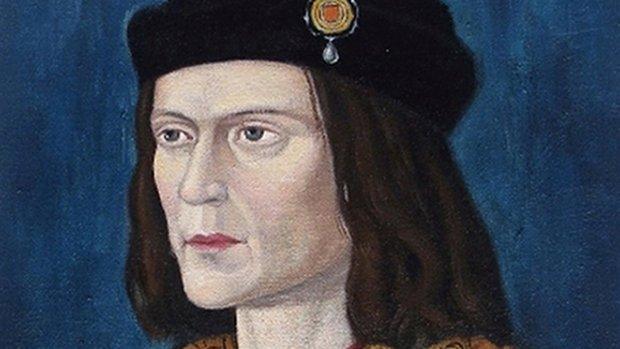
- Published23 March 2015
